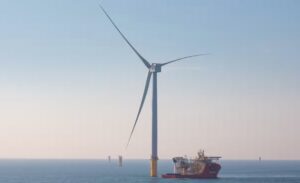New renewable energy jobs figures released by the Australian Bureau of Statistics have highlighted the massive growth in Australian clean energy jobs in the last financial year, with the sector setting new records for the total number of full-time workers engaged in the industry.
In the latest annual update published by the ABS, employment in the renewable energy industry surged by 27 per cent in the 2018-19 financial year, reaching 26,850 full-time equivalent workers, a new record for the Australian industry.
Almost all of the growth in employment occurred within the solar and wind industries, with the small and large scale solar industries representing around two-thirds of the entire renewables sector in terms of employment.
All Australian states saw growth in renewables jobs numbers, with growth particularly strong in Victoria, which grew by a mammoth 72 per cent to 6,090 workers, and South Australia, which surged 41 per cent to 2,560 workers.
The latest figures underline the strong recovery that has occurred in the renewables sector, after employment fell by more than 40 percent between 2012 and 2015, following the election of a hostile Abbott government. Employment now more than doubled since 2015, after state governments stepped in to pick up the slack on clean energy policy.
New South Wales continues to lead the country in overall jobs figures, growing 25 per cent to 7,750 jobs, followed by Queensland which grew 9 per cent to 6,330 full time jobs. After a year of very strong growth, Victoria follows closely in third with employment topping 6,000 workers for the first time.
Rooftop solar installations were the leading employers in the sector, employing just less than half the total renewable energy workforce at 13,070 jobs.
The ABS said that it has now included employment related to the installation of battery storage installations, going back to at least 2015, with the jobs numbers incorporated into the sector that the battery storage system is supporting. In most cases, battery storage figures have been integrated into the solar employment statistics.
Employment in large-scale solar and wind projects recorded the highest rate growth, each growing by more than 50 per cent in the 2018-19 year. Large-scale solar projects employed 4,740 full time workers, followed by the wind industry that employed 3,240 workers.
The rooftop solar industry remains the single largest employer in the renewable sector, adding almost 3,000 jobs in 2018-19 to reach 13,070. This figure is still however short of the all time high employment in rooftop solar, of 14240 full-time workers, set in 2011-12.
The only sector that did not see jobs growth in 2018-19 was the biomass sector, which fell slightly by around 4 per cent, but still employed more than 1,500 workers.
The jobs figures are a positive reflection of the boom in renewable energy investment that has underpinned both strong jobs growth and a surge of new wind and solar installations entering the market, and were welcomed by the Clean Energy Council.
“The ABS data is an excellent illustration of the tip of the iceberg of what’s possible in the renewable energy sector in terms of employment,” Clean Energy Council chief executive, Kane Thornton.
“Our analysis shows that industry and jobs have slowed substantially since, as a result of the slow-down in utility-scale renewable energy projects caused by policy uncertainty and grid constraints. With Australia’s ageing coal-fired power stations at the end of their lifespan, we’re at a critical point.”
Thornton added that now is the right time to provide additional support for the renewable energy sector to grow, has it will help the Australian economy recover from the current period of significant disruption.
“In the short-term, and in light of the impact that COVID-19 is having on the economy, governments should prioritise renewable energy as a way to boost jobs across Australia. They can do this by directly fund the installation of solar on public housing and low-income rental housing. Solar will reduce the electricity bills of people who need the most support and employ a large number of electricians and tradespeople quickly,” Thornton said.
“Long-term, we need government investment in upgrading our electricity grid. It will create a significant boost in employment in regional Australia, which we know is crucial to a prosperous Australian economy.”
While 2018-19 was a record year for job numbers, the ongoing market will be difficult in light of the sharp slump in new large scale project investment, and more recently the concern in rooftop solar because of the impacts of the Covid-19 pandemic.
The renewables sector has been hit by a new period of great uncertainty for the sector, including ongoing challenges related to network connections, an uncertain federal policy environment and the end of the federal Renewable Energy Target.
These challenges will now only be exacerbated by the economic disruption caused by Covid-19.
The ABS also estimated that more than a quarter of “suitable dwellings” now had rooftop solar installed, reaching 27 per cent in December 2019.
Rooftop solar penetration was highest in Queensland, with 39 per cent of “suitable dwellings” having solar installed, followed closely by South Australia with 38 per cent and Western Australia with one-third of households.
The ABS defined a “suitable dwelling” as ” a separate house or as semi-detached row or terrace house”, capturing homes that have sufficient access to roof space to have a system installed.
RenewEconomy and its sister sites One Step Off The Grid and The Driven will continue to publish throughout the Covid-19 crisis, posting good news about technology and project development, and holding government, regulators and business to account. But as the conference market evaporates, and some advertisers pull in their budgets, readers can help by making a voluntary donation here to help ensure we can continue to offer the service free of charge and to as wide an audience as possible. Thankyou for your support.







